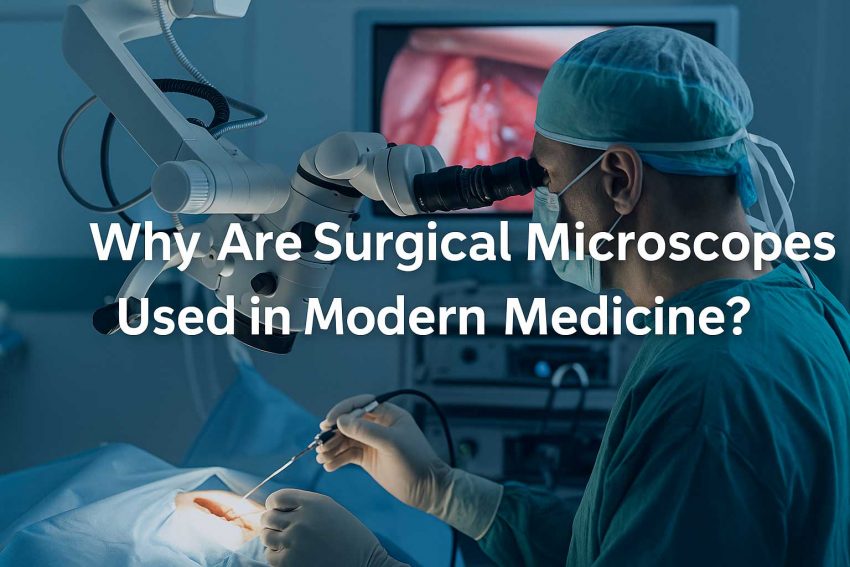Modern surgical microscopes enable microscale precision in complex procedures, demands more than skill—it requires precision at a level beyond what the human eye can see.
Surgeons today operate on structures measured in millimeters or less. To do this safely and effectively, they rely on one of the most critical innovations in medical technology: the surgical microscope. But why exactly are surgical microscopes used in modern medicine? What do they offer that traditional tools cannot? This article explores the powerful role these optical devices play in improving surgical accuracy, safety, and patient outcomes.
What Is a Surgical Microscope?
A surgical microscope is a high-precision optical instrument that provides surgeons with a magnified, well-illuminated, and stereoscopic (3D) view of the surgical field.
Modern surgical microscopes include:
- Adjustable magnification (up to 40x)
- Shadow-free coaxial illumination
- Hands-free foot control
- High-definition imaging for documentation
Why Are Surgical Microscopes Used?
1. Magnification of Tiny Structures
Surgical microscopes allow clear visualization of minute structures like blood vessels and nerves.
Example: In neurosurgery, 10–20x magnification is used to safely dissect brain tissue around critical structures.
2. Improved Illumination and Visibility
With coaxial lighting, shadows are eliminated, allowing better depth and color contrast.
Types of Illumination:
- LED – Long-lasting, energy-efficient
- Xenon – High intensity for deep cavity procedures
3. Enhanced Precision and Control
Enables micro-movements and fine suturing, reduces collateral damage, and is crucial for eye, ENT, and dental surgeries.
4. Better Surgeon Ergonomics
Modern microscopes feature:
- Adjustable viewing angles
- Foot pedal control for zoom/focus
- Reduced fatigue during long procedures
5. Real-Time Documentation and Training
Live feed allows assistants and students to observe in real time.
Built-in cameras allow:
- Recording for legal/training use
- Live sharing to OR monitors
- Enhanced education in academic settings
Where Are Surgical Microscopes Used?
| Specialty | Purpose |
|---|---|
| Neurosurgery | Tumor removal, nerve mapping |
| Ophthalmology | Cataract, retinal, and corneal surgeries |
| ENT | Middle ear, larynx, sinus operations |
| Dentistry | Root canals, precision fillings, gum procedures |
| Plastic Surgery | Micro-suturing, flap repair, cosmetic reconstruction |
| Veterinary | Eye/ear/limb surgeries in small animals |
Better Patient Outcomes
Using a surgical microscope can:
- Reduce surgical trauma
- Lower complication rates
- Decrease re-operation needs
- Speed up recovery time
Integration with Advanced Technology
Modern systems now offer:
- AI-based auto focus
- Augmented reality overlays
- Robotic positioning
- 4K/8K video capture for precise documentation
The Future of Surgical Microscopy
Expect advancements in:
- Heads-up displays (HUDs)
- Remote-controlled optics
- Digital-only exoscopes
- Cloud-integrated surgical data and video archiving
Surgical microscopes have become essential tools in modern medicine. They combine vision enhancement, ergonomic control, and digital precision to enable surgeries that were once impossible.
Whether you’re a medical student, surgeon, or equipment buyer, understanding their value is key to appreciating how far surgical technology has come—and where it’s headed.
Explore More:
